Common Questions About Agriculture
Accurate, well-sourced information
Helpful information is just a click away! We've made it easy to access accurate and well researched answers to some of the most common questions about agriculture.
If we take into consideration the entire lifetime feed intake of cattle, only 7% of their diet is made up of grain. The other 93% of the animal’s lifetime diet will consist largely of feed that is inedible to humans. For every 0.6 pounds of human edible protein cattle consume, there is a return of 1 pound of human edible protein in the form of beef. And 86% of what livestock eat globally is not in competition with human food. Cattle are ruminant animals, meaning they have a four-chambered stomach. This unique stomach system is found in other farm animals like sheep and goats. These animals have the ability to graze pastures and eat forages that humans and other animals with non-ruminant stomachs cannot digest due to the fiber content. Cattle diets also consist of feed that has been converted from grain milling and processing waste. Cattle are able to convert this into a high-quality protein for their diets.
No. There is no nutritional difference in the two colors of eggs. Both are good for you and part of a balanced diet. Different breeds of chickens lay different colored eggs. White Leghorns and Golden Comets are common breeds of egg-laying chickens. The White Leghorns lay white eggs, while the Golden Comets lay brown. Often, the color of the egg is the same as the color of the skin around the chicken’s ears. Depending on where you live, you might see more brown or white eggs. There are more brown eggs in the northeastern U.S., and more white eggs in the western U.S.
This general statement is a common misconception. Several naturally occurring pesticides are highly toxic, even carcinogenic. Copper sulfate is highly toxic and shown to cause liver disease. Rotenone is a plant extract found in some species within the pea family. It has received significant attention because of studies indicating a potential link to Parkinson’s disease. All pesticides, natural or synthetic, are reviewed and regulated by the Environmental Protection Agency (EPA).
America’s farms are still family farms. Family farms do incorporate for the same reasons that other businesses incorporate — taxes, structure, family home protection, etc. And yes, some family farms are becoming larger to take advantage of efficiencies of scale and to spread out their overhead costs. However, they are still considered family farms. Today, about 98% of U.S. farms are operated by families — whether individuals, family corporations or family partnerships.
Animal agriculture plays an important role in feeding the growing population. Although it may appear that land used for livestock and livestock feed should be used for human food consumption, much of this land is not suitable for growing human food crops. 86% of what livestock eat globally is not in competition with human food. Many acres used for livestock grazing are made up of forages that can only be eaten by ruminant animals, like cattle, and converted to products for humans to eat. Additionally, animal agriculture provides the components humans need for a well-balanced, healthy diet and contribute a number of by-products including leather, ointments and creams for burns, insulin, paint brushes and sports equipment to name a few.
Farmers actually have lower overall cancer rates than the general population. The National Cancer Institute conducted an “Agricultural Health Study.” The study began in 1993 and continued through 2011. The study concluded that farmers in many countries, including the U.S., have “lower overall death rates and cancer rates than the general population.” This is due primarily to lower smoking rates among farmers and a very active lifestyle. The research also showed, however, that rates for certain types of cancer are higher in agricultural workers. Leukemia, Non-Hodgkin lymphoma and skin cancer are some examples. Research has not been conclusive on the cause of this increased rate, however, there is cause to believe than an increased exposure of UV rays as well as environmental elements may be the cause of an increase in skin cancer among farmers.
U.S. farmers and ranchers are actually producing more with less. For example, total U.S. corn yield (tons per acre) has increased more than 360% since 1950. Globally, this statistic varies drastically with direct correlation to advancements in mechanical and biological technology available.
Synthetic fertilizers are not allowed in certified organic products, but select pesticides are allowed. The USDA National Organic Program (NOP) oversees organic certification. Organic producers must follow a strict process for production and processing of products. But organic does not mean “without pesticides.” Natural pesticides and synthetic pesticides are allowed in some cases. The NOP requirements provide a list of synthetic substances that may be used in organic production as long as these do not contaminate crops, soil or water. Chlorine and hydrogen peroxide are examples of some allowable synthetic substances allowed in organic production.
Just because a farm is large in number of acres, does not mean it is a corporate farm. Individuals, family partnerships or family corporations own 98% of all U.S. farms and ranches. Non-family corporations own just 2% of America’s farms and ranches. In recent years, some of these family farms have chosen to incorporate to take advantages of taxes, business structure, family home protection, etc.
American agriculture is a matter of national security. We have made astounding advancements in agriculture since colonial times. During colonial times one farmer fed four others. Today, one farmer produces food for 166 others. American agriculture is vital to our country! Consider the impact to not only the United States, but globally, if our food supply was interrupted or contaminated. The 2015 House Agriculture Committee Chairman K. Michael Conaway shared, “Agriculture and national security are intertwined in many different ways — whether it is insuring that food is available to meet nutritional needs for both those within our own borders and those around the world, ensuring that food coming into our borders is disease- and pest-free, or guaranteeing that farmers and ranchers have the needed policy tools in place to continue producing food and fiber.”
Agriculture is a necessity! It creates jobs, helps our economy and provides our basic necessities — food, fiber (like cotton and wool) and shelter (like lumber for homes). By 2050, there will be nearly 10 billion people on Earth. This is about 3 billion more mouths to feed than there were in 2010. Increasing food production today while preserving tomorrow’s resources will be necessary to meet the needs of our growing population and demands creativity and innovation. Farmers of all ages face this challenge and must continue to be advocates for the importance of agriculture and the need for the industry in the future
High fructose corn syrup (HFCS) is a common sweetener in sodas and drinks. Recently, it has come under fire for impacting obesity, but research suggests that there is no significant difference between HFCS and other sweeteners. Researchers are confident, however, that too much sugar of any kind in a diet can lead to obesity. The American Heart Association recommends no more than 100 calories a day of added sugar for women and 150 calories for men. That’s equal to about 6 tsp of sugar for women, and 9 tsp for men.










